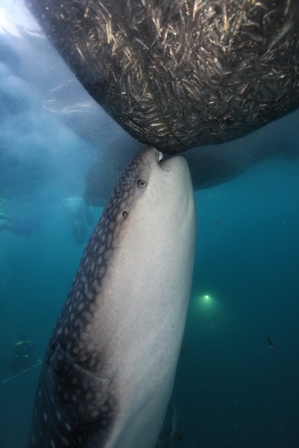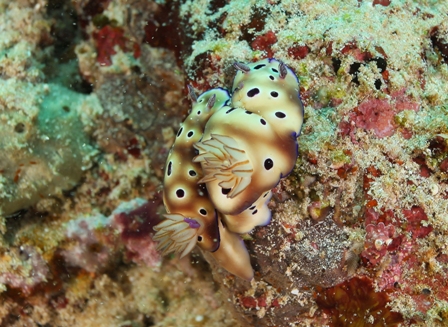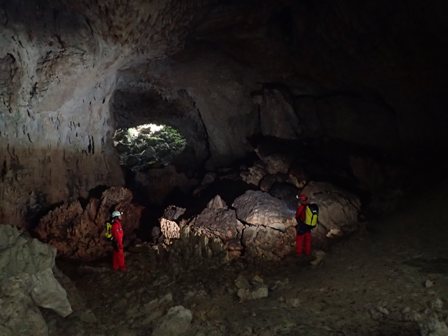Thursday 30th October, from Lobo ground base camp.
On this last day of work in Lobo, everybody is dealing with their own samples and feeding data into computers. The explorers, who just came back the day before, were up early. Laurent, Marc and Jean left at dawn to go fishing. They caught two large barracudas, enough to feed all of us until tomorrow.
Late in the afternoon, the Airaha 2 came back. Tomorrow, we will dismantle the camp, load the equipment on the two ships and sail back to Kamaina in the evening. The divers are happy with their diving experiences over the last few days. Two days ago, while on a 30-foot deep dive, they caught a sea krait, a highly venomous black and blue sea snake. Yesterday, they dived with a whale shark nibbling on fishermen’s nets. And today, they were able to observe quite a few rare specimens: a ghost pipefish, a slate-pencil sea urchin, deep-water eight-armed starfish, seaweed pipefish — a kind of thin and elongated seahorse —, and nudibranchs, or sea slugs, of all colours and shapes.
Tonight is the great return of the speleologists and karst experts, Guilhem, Bruno and Hubert, who have tried to explore an underground part of the Lengguru river, between a resurgence spring and a stream sink, which they had previously identified on the map. They were accompanied by Dr Kadar, Sopian, Christophe, and later joined by the filmmakers, Christine and Jean-Pierre, who were hoping to find cave-dwelling fish. To reach their goal, they all had to travel by pirogue for an entire day with many portages through rapids. Then, another half a day was spent waiting for the villagers to give their consent to lead them to the resurgence.
Guilhem tells us about their discoveries: “When we reached the resurgence, we realised that the water was coming through fallen rocks in several places.”
The Papuans led them to a first cave a hundred meters above. “The volumes are huge. Deeper in the cave, the underground river flows out from fallen rocks and seeps in again in downstream cracks. But it’s just a minor branch of the river. After a week of investigations in the area and more very nice discoveries, we had to admit that the underground river could not be accessed either upstream or downstream. In spite of this disappointing experience from a speleological point of view, we made major progress in our scientific knowledge and understanding of karsts.”
(translated by Maxime Corbin, L2 SVC–Life & Earth Sciences– and Stephan Gasca, DDL, UM2, France)





